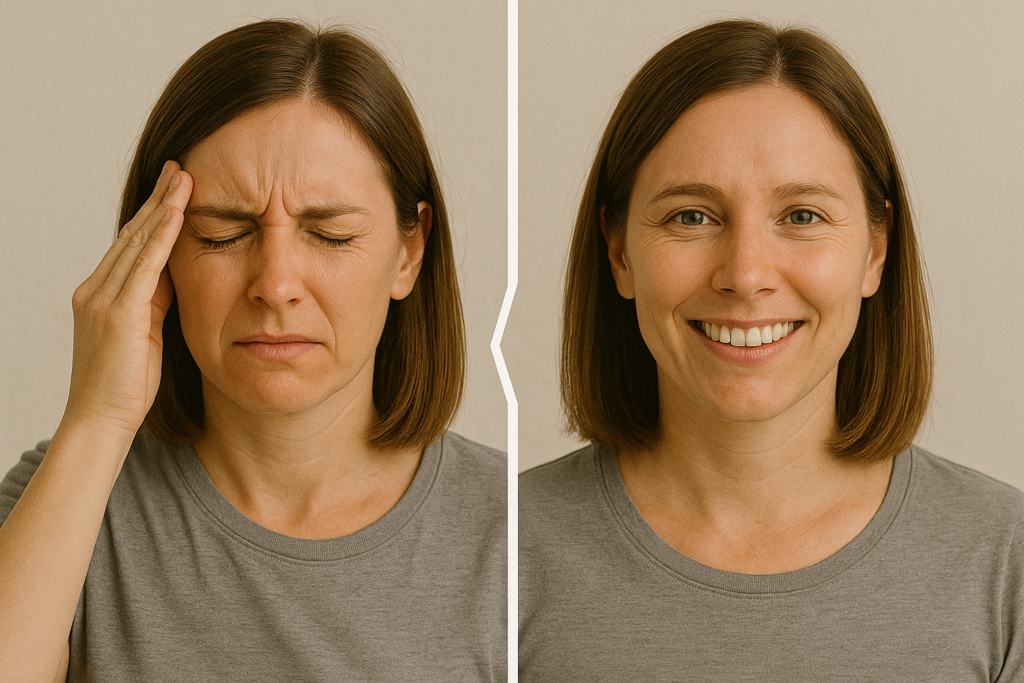Chronic migraines can disrupt daily life, leaving sufferers searching for effective, natural solutions. This blog examines the role of chiropractic care in migraine relief, focusing on how spinal health may influence migraine symptoms. We will explore the science behind chiropractic adjustments, what to expect during treatment, and when this approach might be a good fit for your overall care plan.
What causes migraines, and why are they so hard to treat?

Migraines are complex neurological events that vary widely in their triggers and symptoms, making them notoriously difficult to manage. Understanding the root causes is key to finding effective relief.
- Common triggers: Stress, hormonal changes, certain foods, and environmental factors like bright lights or strong smells can all contribute to migraines.
- Focus on symptoms: Traditional treatments often aim to manage symptoms rather than addressing the underlying causes, leaving many patients frustrated.
- Impact on quality of life: Chronic migraines can lead to missed work, social isolation, and mental health challenges, prompting many to explore alternative therapies like chiropractic care.
How can chiropractic care help with migraines?
Chiropractic care emphasizes spinal alignment and nervous system health, which may play a role in reducing migraine frequency and severity. Here’s how it works:
- Cervical spine misalignments: Issues in the neck and upper spine can create tension and irritate nerves, both of which are common migraine triggers.
- Restoring alignment: Chiropractic adjustments aim to correct these misalignments, potentially reducing stress on the nervous system and alleviating migraine symptoms.
- Evidence of effectiveness: Studies, such as those cited by PubMed, suggest that regular chiropractic care may lead to fewer migraines and less severe symptoms for some patients.
What should you expect during chiropractic treatment for migraines?
For those considering chiropractic care, understanding the process can help set realistic expectations and ease any concerns. Here’s what typically happens:
- Initial consultation: Your chiropractor will review your medical history, discuss your symptoms, and identify potential triggers for your migraines.
- Spinal adjustments: Gentle manipulations are performed to improve spinal alignment and reduce tension in the neck and upper back.
- Complementary techniques: Chiropractors may recommend stretches, posture corrections, or ergonomic adjustments to support long-term relief.
Are there risks or limitations to chiropractic care for migraines?
While chiropractic care can be beneficial, it is not a universal solution. It’s important to understand the potential risks and limitations:
- Safety considerations: Chiropractic care is generally safe but may not be suitable for individuals with conditions like severe osteoporosis or spinal instability.
- Choosing the right provider: Always work with a licensed chiropractor who has experience treating migraines.
- Complementary approach: Chiropractic care is often most effective when combined with other treatments, such as stress management techniques or dietary changes.
When should you consider chiropractic care for migraines?
Chiropractic care may not be the first option for everyone, but it can be a valuable part of a broader migraine management strategy. Here’s when it might make sense:
- When traditional treatments fall short: If medications and other therapies haven’t provided sufficient relief, chiropractic care may offer a complementary approach.
- Tension-related migraines: Those experiencing migraines linked to neck pain or muscle tension may benefit most from spinal adjustments.
- Consult your doctor: Always discuss chiropractic care with your primary care physician to ensure it aligns with your overall treatment plan.
Conclusion
Chiropractic care can be a valuable tool for some individuals seeking natural migraine relief, particularly when combined with other treatments. By addressing spinal alignment and nervous system health, chiropractic adjustments may reduce the frequency and severity of migraines for certain patients.
- Consider chiropractic care as part of a holistic migraine management strategy, especially if traditional treatments have not been effective.
- Consult with healthcare professionals to determine whether this approach is right for your specific needs.
- For those exploring alternative therapies, reaching out to experienced chiropractors or holistic health experts can provide additional guidance and support.





